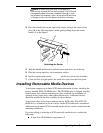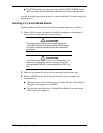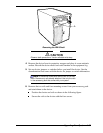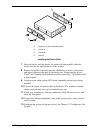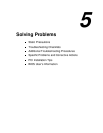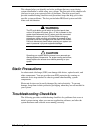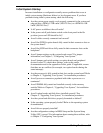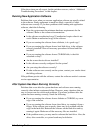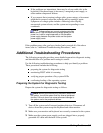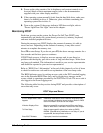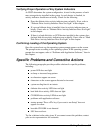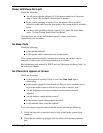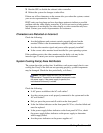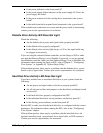
Solving Problems 5-3
Initial System Startup
Incorrect installation or configuration usually causes problems that occur at
initial system startup. Hardware failure is a less frequent cause. If you have
problems during initial system startup, check the following.
Are the system power supply cords properly connected to the system and
plugged into a NEMA 5-15R outlet (100-120 Vac) or a NEMA 6-15R
outlet (200-240 Vac)?
Is AC power available at the wall outlet?
Is the power on/off push-button switch on the front panel in the On
position (power on LED should be lit)?
Are all cables correctly connected and secured?
Are all the PCI/ISA option boards fully seated in their connector slots on
the system board?
Are all the SCSI hard drives fully seated in their connector slots on the
backplane?
Are all jumper settings on the system board correct? For jumper
information, see Chapter 3, “Configuring Your System.”
Are all jumpers and switch settings on option boards and peripheral
devices correct? To check these settings, refer to the vendor
documentation and to the appendices in this guide. If applicable, ensure
that there are no conflicts (for example, two option boards sharing the
same interrupt).
Are the processor(s) fully seated in their slots on the system board? Refer
to Chapter 4, “Upgrading Your System,” for installation procedures.
Are all processor connectors populated with either a processor or a
terminator?
Are all DIMMs fully seated and installed correctly in the memory
module? Refer to Chapter 4, “Upgrading Your System,” for installation
procedures.
Are all option boards and disk drives installed correctly? See
Chapter 4, “Upgrading Your System,” for installation procedures.
Are the system hard disk drives properly formatted or defined?
Is the operating system properly loaded? Refer to the operating system
documentation.
Are all drivers properly installed?
Are the configuration settings in BIOS Setup and the System Setup
Utility (SSU) correct? For information about running these utilities, refer
to Chapter 3 “Configuring Your System.”



